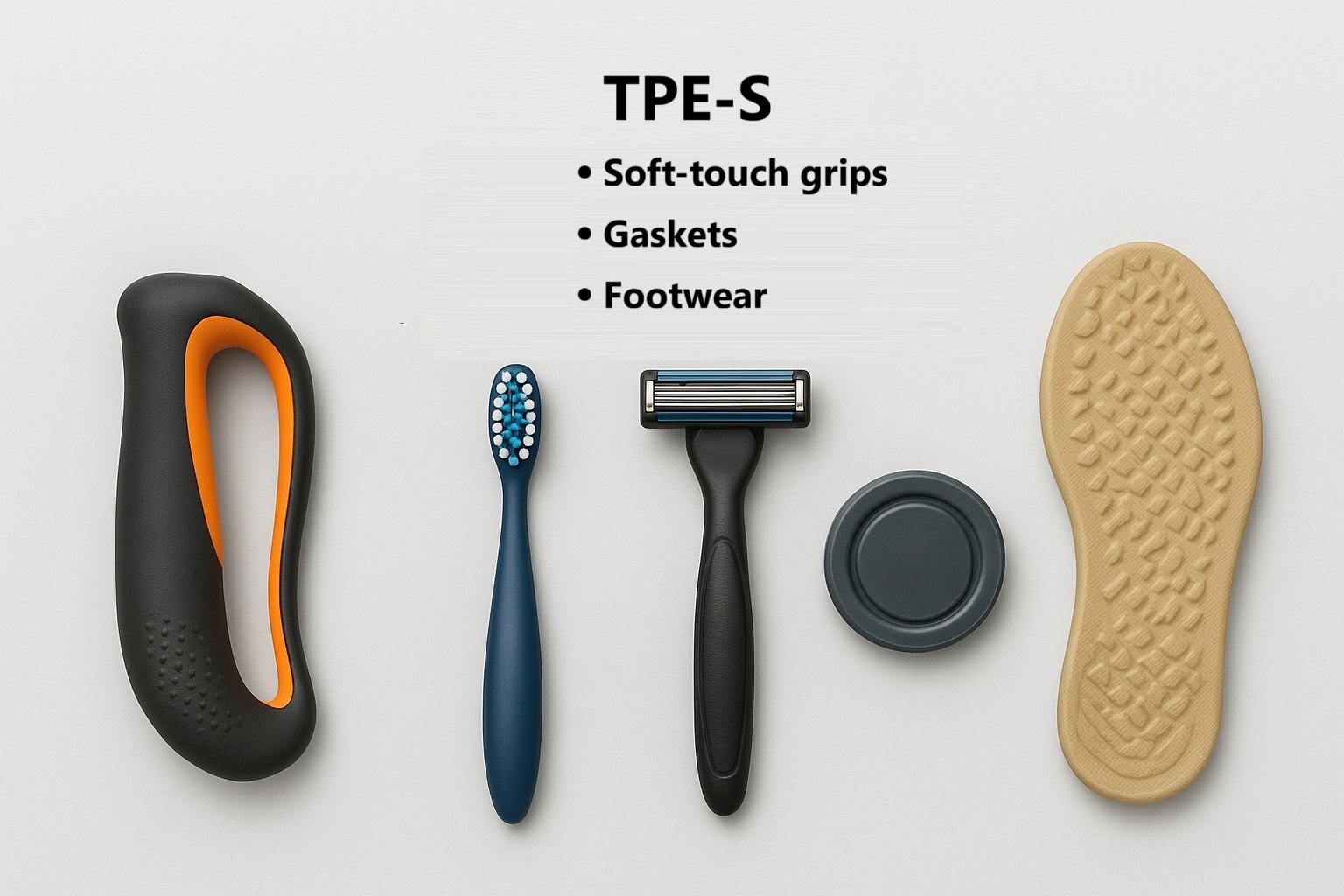A styrenic thermoplastic elastomer, or TPE-S, is a material intermediate between rubber and plastic—it has characteristics of both.
Let’s look at them in detail:
🔹 Structure
It is composed of styrene blocks (rigid) and elastomeric blocks (rubbery), typically butadiene or isoprene (e.g., SBS, SEBS).
- The styrenic blocks provide rigidity and processability like a thermoplastic.
- The elastomeric blocks provide elasticity and softness, similar to rubber.
🔹 Behavior
• At room temperature → it behaves like rubber (elastic, soft).
• At high temperatures → it softens and can be processed like a plastic (injection molding, extrusion, etc.).
👉 No vulcanization required (unlike traditional rubbers).
🔹 In summary
| Appearance | Behavior |
| Cold | Rubber (elastic) |
| Hot | Plastic (thermoplastic) |
| Processing | Like Plastic |
| Use properties | Like Rubber |
✅ Conclusion
➡️ A styrenic thermoplastic elastomer is a plastic with elastic behavior similar to rubber. Technically, it is not a vulcanized rubber, but a type of elastic plastic.
Examples of products and applications:
Styrene-based thermoplastic elastomers are used to create a wide range of products that require both the softness and strength of rubber, but benefit from the ease of manufacturing of plastic.
- Soft-touch grips: Products such as tool handles, toothbrushes, or razors.
- Gaskets: Seals for bottles and other containers.
- Footwear: Sole parts and inserts.
- Consumer goods: Soft toy components.
- Automotive components: Seals and internal parts.
Let’s analyze step by step the characteristics of a styrene-based thermoplastic elastomer (TPE-S) and how they influence the design of the injection screw, although much depends on the specific composition (styrene content, fillers, etc.).
1️⃣ Chemical and physical characteristics
| Properties | TPE-S |
| Corrosive? | No, generally chemically stable; does not require special materials. |
| Abrasive? | Not particularly, unless it contains mineral fillers or reinforcing fibers. In this case, the use of wear-resistant coatings for the screw and injection barrel is considered. |
| Melting/transition temperature: | Styrene blocks melt at around 90–120°C; elastomeric blocks do not melt sharply, but soften gradually. Typical process temperature: 200–250°C. |
| Viscosity | Medium-low at process temperature; the material flows well, but is sensitive to shear and thermal degradation. |
| Injection pressure: | Relatively low compared to rigid polymers; typically 500–1200 bar, depending on mold geometry and runner length. |
2️⃣ Injection screw design parameters
A TPE-S requires a screw with specific characteristics because it is thermoplastic, elastic, and sensitive to thermal degradation.
🔹 Screw type
• Moderate compression screw or gradual compression screw.
• L/D ratio: sufficient to mold uniformly without degradation.
• Helix: must avoid shear and overheating.
🔹 Diameters and geometry
- Feed zone: adequate depth to accommodate the soft material.
- Compression zone: sufficient to mix without degradation.
- Metering zone: correct length for homogeneous flow and constant pressure.
🔹 Plasticizing speed and pressure
- Technical molding details such as: screw speed, barrel temperature, and injection pressure will, as always, be obtained from the specific technical data sheet prepared by your material supplier.
🔹 Other considerations
- Elastic recovery: it is necessary to design the screw and mold considering greater shrinkage compared to rigid thermoplastics.
- Lubrication: often not required; some TPE-S contain internal lubricants.
3️⃣ Summary of typical TPE-S screw parameters
| Parameter | Typical value |
| Screw type | Viplas can draw you a diagram of the optimal screw for TPE-S, highlighting the feed, compression, and metering zones with depth and helix angle values. If we are provided with the specific technical data sheet for the material, including any additives, we can also precisely define the required material and the related heat and surface treatments. |
| L/D ratio | |
| Compression ratio | |
| Screw material | |
| Cylinder material |



